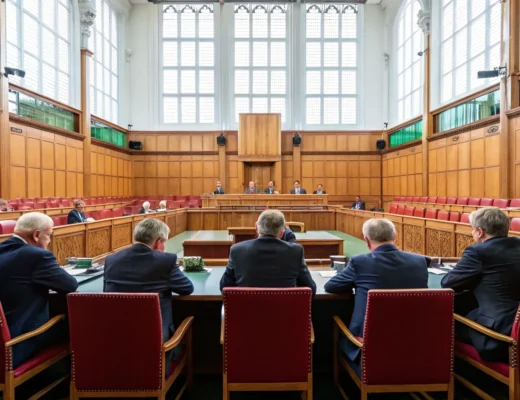Documents released as part of the Spending Review indicate that council tax is expected to increase by 5% annually to fund local services across the UK. This projected rise comes as local authorities face ongoing financial pressures and increasing demands for essential community services.
The 5% annual increase would represent a significant additional cost for households already managing rising living expenses. For an average Band D property, this could mean paying several hundred pounds more over the coming years if the increases are implemented as suggested.
Financial Pressures on Local Authorities
Local governments have been grappling with budget constraints for years, with many councils reporting difficulties in maintaining service levels. The proposed council tax increases appear to be part of a strategy to address funding gaps that have emerged in various service areas.
The Spending Review documents suggest that without these increases, many local authorities would struggle to deliver essential services including:
- Social care for adults and children
- Waste collection and disposal
- Road maintenance and infrastructure
- Libraries and community centers
Financial experts note that councils have faced reduced central government funding over the past decade, placing greater reliance on locally-raised revenue through council tax and business rates.
Impact on Households
The proposed 5% annual increase would affect millions of households across the country. For those in higher council tax bands or areas with already high rates, the financial impact could be substantial.
Consumer groups have expressed concern about the timing of these increases, particularly as many families continue to deal with inflation and higher costs of living. The cumulative effect of year-on-year increases could place additional strain on household budgets.
“A 5% annual increase in council tax represents a significant additional expense for families who are already carefully managing their budgets in the current economic climate,” noted one financial analyst familiar with the proposals.
Some local authorities may offer council tax support schemes for those on lower incomes, though the availability and generosity of these programs varies by location.
Service Delivery Expectations
The documents indicate that the additional revenue would help maintain and potentially improve local services. Residents will likely expect to see tangible benefits from their increased contributions.
Areas that could see investment include:
- Improved social care provision
- Enhanced local infrastructure
- Better maintenance of public spaces
- Support for community programs
Local government associations have long argued that sustainable funding is essential for delivering quality services. The proposed increases appear to acknowledge this need while placing the financial responsibility primarily on local taxpayers.
The Spending Review documents do not detail whether additional central government support will accompany these local tax increases, raising questions about the overall funding strategy for local services in the coming years.
As these proposals move forward, local authorities will need to communicate clearly with residents about how the additional revenue will be used and what improvements in services they can expect to see. The challenge will be demonstrating value for money at a time when many households are carefully scrutinizing their expenses.







